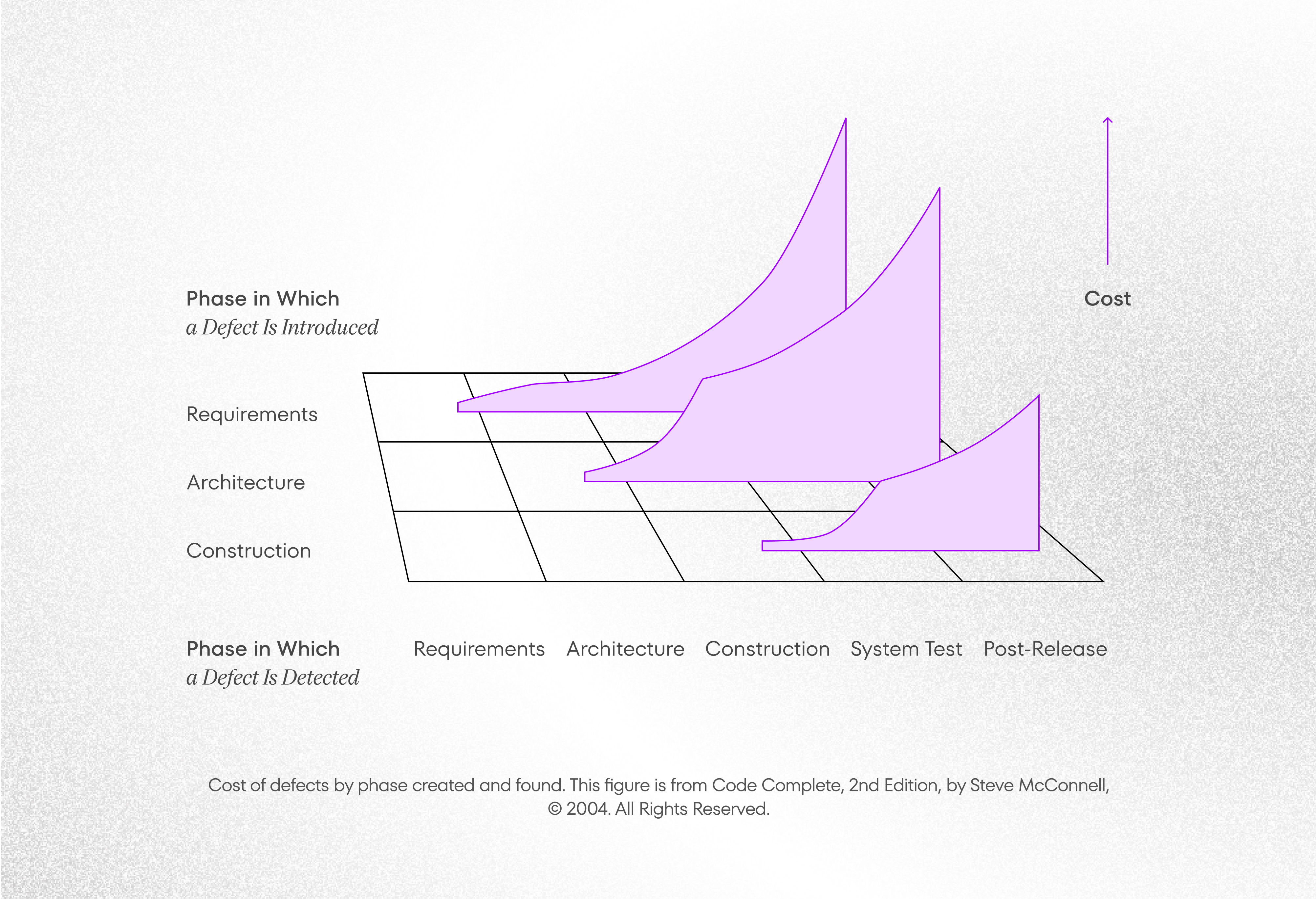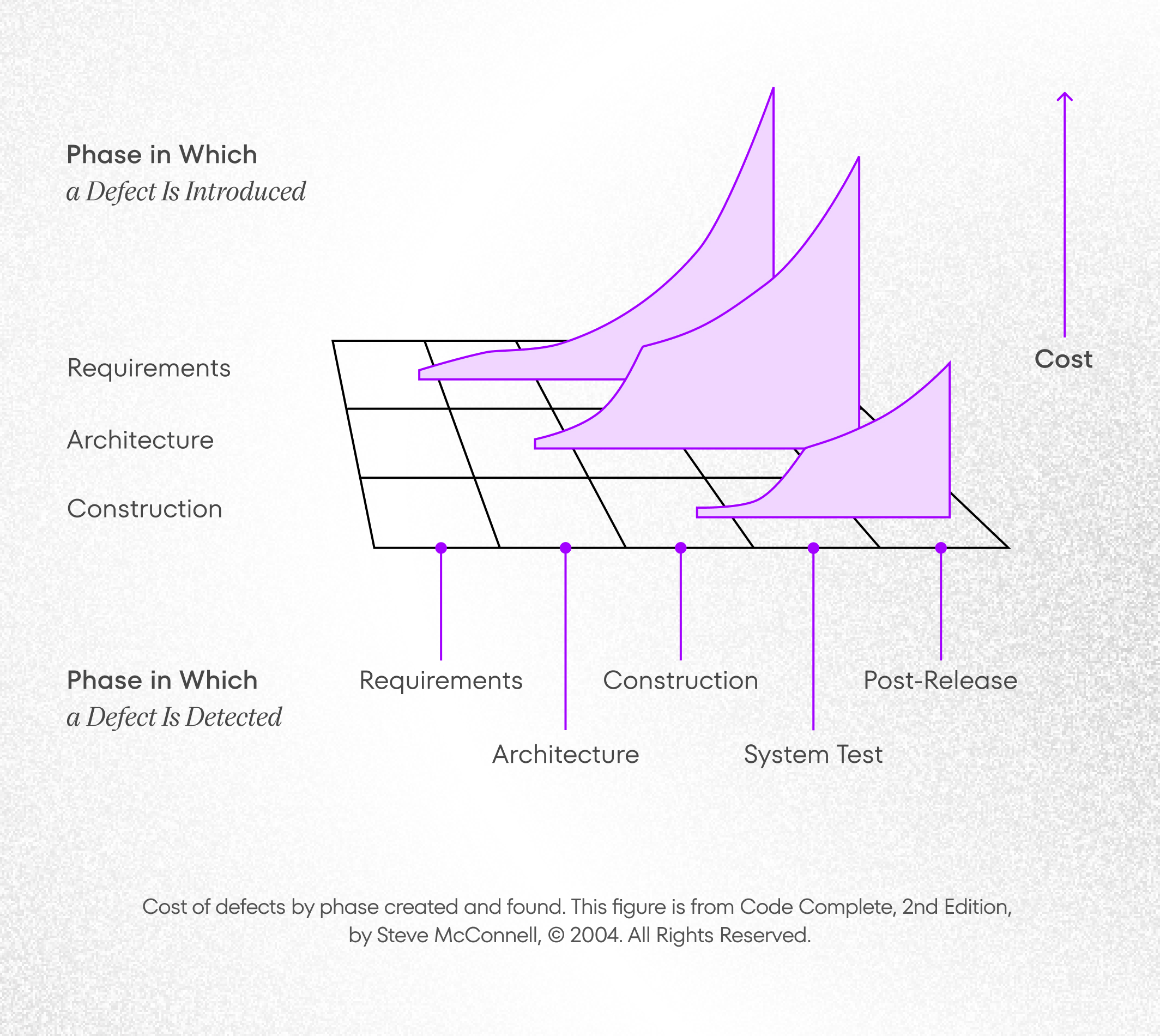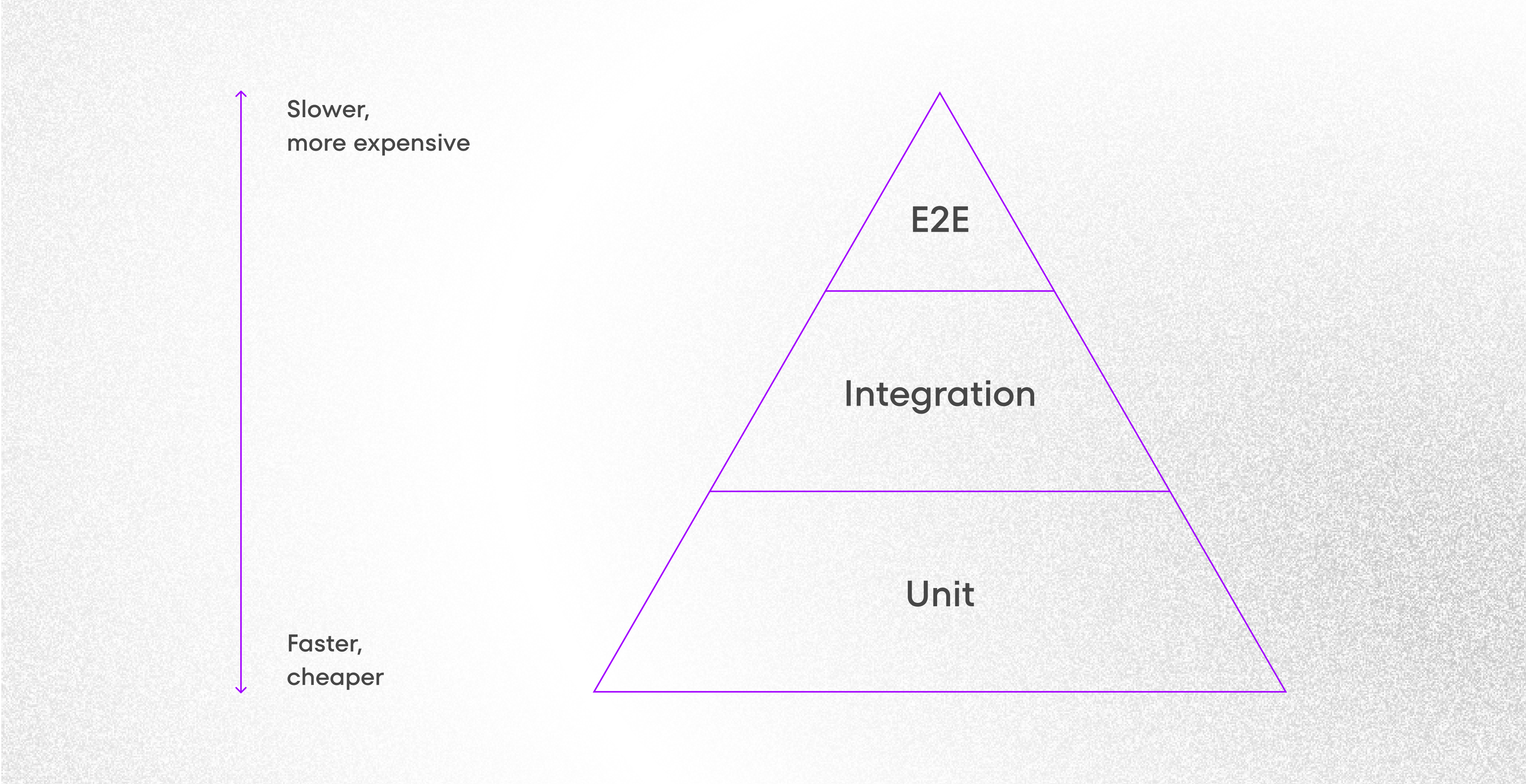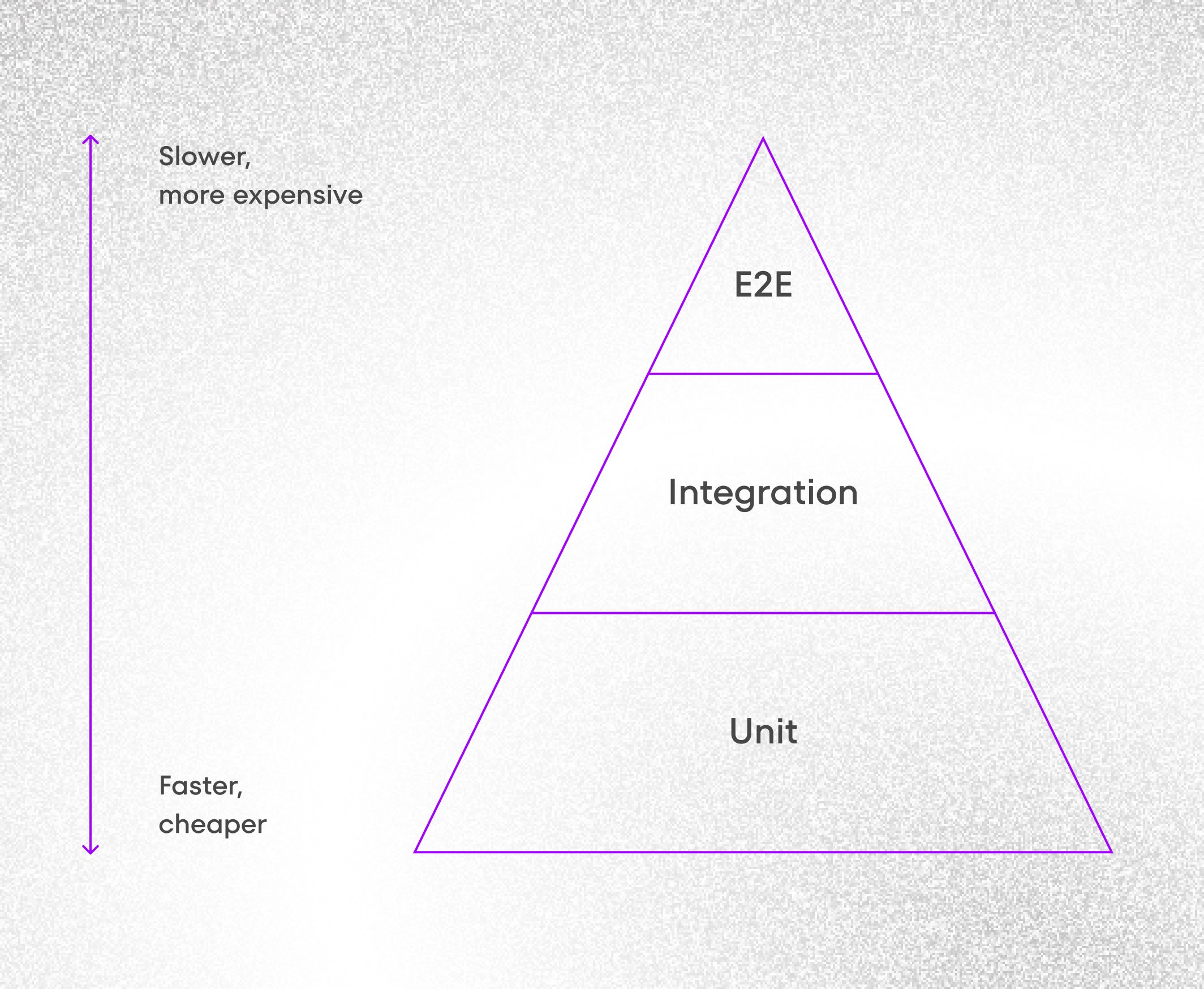July 21st, 2025 | by Michał Gałczewski, Natalia Dertlatka
Creating Quality Strategy and Establishing QA Processes

Table of contents
Pros of the Software Testing/Quality Assurance
The Quality Assurance process measures if the business and project requirements are met, and the delivered product is reliable, secure, and stable.
Quality Assurance is important for the software development project to guarantee that everything that happens through the development process is done effectively.
There are many ways in which testing proves beneficial in software development.
- Identifying Bugs Early – testing helps in identifying bugs and issues early in the development process, reducing the cost and effort required to fix them. Finding and fixing bugs early prevents them from becoming more complex and expensive problems later on.
- Ensuring Quality – testing ensures that the software meets the specified requirements and performs as expected. It helps in delivering a high-quality product that meets user expectations, leading to increased customer satisfaction and retention.
- Reducing Risks – testing helps in identifying potential risks and vulnerabilities in the software, such as security vulnerabilities or performance bottlenecks. By addressing these issues early, testing reduces the likelihood of critical failures or security breaches in production.
- Saving Time and Money – while testing requires investment in terms of time and resources, it ultimately saves time and money by reducing the need for extensive debugging and rework later in the development process. Fixing bugs early is generally less expensive than fixing them after the software has been deployed to production.
- Improving User Experience – thorough testing helps in identifying usability issues and areas for improvement in the user interface and user experience. By addressing these issues before release, testing contributes to a smoother and more enjoyable user experience, enhancing the overall quality of the product.
- Building Trust – a well-tested and reliable software product builds trust and credibility with users, stakeholders, and customers. It demonstrates the commitment to quality and reliability, leading to increased confidence in the product and the brand.
Overall, testing is a critical component of software development that pays off by ensuring quality, reducing risks, saving time and money, and ultimately delivering a better product to users.
The cost of defects in software testing
Over the years, numerous studies have demonstrated the significance of early detection and prevention of defects in the software lifecycle, aiming to reduce costs and uphold product quality.


The figure above coincides with the rule: 1:10:100, which is mentioned in many other sources, including IBM research or the book “Effective Methods for Software Testing”, written by William E. Perry.
Rule 1:10:100, also known as the 1:10:100 rule, is a guideline often applied in quality assurance (QA) and defect management. It states that the cost to fix an issue increases exponentially depending on the stage at which it is discovered. Here’s what each number represents:
Detection in the Requirements Phase – If an issue is detected and fixed during the requirements gathering or early planning stages, it’s generally the cheapest to address. This is because changes can be made easily without affecting much of the downstream development process.
Detection in the Development Phase – If the issue is discovered during development, it typically costs about ten times more to fix than found in the requirements phase. This is because changes in the development phase might require rework of code, testing, and potentially impact other parts of the system.
Detection in the Testing or Production Phase – If the issue isn’t discovered until testing or even worse, in production, it can cost up to a hundred times more to fix than found in the requirements phase. This is because fixing it at this stage may involve significant rework, regression testing, and potentially damage to reputation or customer experience.
This rule underscores the importance of early detection and prevention of defects in the software development lifecycle to minimize costs and ensure product quality.
Our approach – Process
Based on many years of experience, we have developed the most effective processes to ensure that the delivered product is of the best quality.
- QA Specialists are engaged in the project from the initial phase to verify and validate requirements. We analyze the software requirements to ensure they are clear, complete, and testable. We also identify potential risks or issues that may impact the testing process.
- Our QA Engineers are involved in creating processes for each stage of a product’s development life cycle to help reduce bugs, flaws, and other defects during its build. It’s crucial as well for measuring and maintaining the quality of the product. It also helps to identify and prevent possible issues before they appear.
- The Test Manager and QA Team Lead prepare the Test Strategy based on the project documentation to cover all business and process requirements. The Test Automation Architect prepares the Test Automation Project. During this phase happens:
- Identification of deliverables and milestones
- Identification of testing objectives and scope
- Planning the test process by selecting the testing methods and techniques that will be used proposing the best tools for functional and non-functional tests.
- We monitor on an ongoing basis how the processes are performed and make sure that the quality requirements are being fulfilled. It is a proactive, process-based approach that aims to manage the quality of a product before and during the production process.
Our QA team is focused on end-user satisfaction, ensuring the product’s features and functions meet the client’s requirements.
Continuous integration process
In our approach, we use good practices such as the test pyramid and continuous iteration:
- The test pyramid promotes a balanced testing approach where the majority of tests are fast, focused, and inexpensive to maintain (unit tests), with a smaller number of tests covering broader functionality (integration tests) and an even smaller number of tests validating the system’s behavior end-to-end. This approach helps teams achieve comprehensive test coverage while maintaining a manageable test suite that provides timely feedback and supports rapid iteration and deployment.
- Continuous iteration (CI) allows us to adapt to changing requirements, feedback, and market conditions quickly. By iterating in short cycles, teams can incorporate new information and insights into their development process, ensuring that the software remains aligned with stakeholder needs and business objectives.


The test pyramid and CI support rapid test execution in the continuous integration process. As a result, the team can immediately respond in case of defects in the software code, even several times a day.
Individual approach to creating test strategy/Individually tailored test strategies
Our testing strategies are always tailored to the specific project and based on the project documentation to cover all business and process requirements.
In addition to the standard testing strategy, we have also developed other approaches:
- Risk-based test strategy is an approach to software testing that directs testing effort based on the level of risk associated with different aspects of the software system. This strategy aims to optimize testing resources by focusing on areas of the application that are most critical or prone to defects, thereby maximizing the likelihood of detecting and addressing high-impact issues. This method is proven to be reliable andf cost-effective.
- A hybrid manual-automation risk-based strategy offers a balanced approach to software testing, leveraging the strengths of both manual testing and test automation to achieve high-quality software products. During test execution, testing teams prioritize the execution of test cases based on their relevance to identified risks. High-risk areas receive greater attention, with more extensive testing performed to uncover potential issues. Test coverage is aligned with risk priorities, ensuring that critical functionalities are adequately validated to mitigate project risks. By combining human intuition and creativity with the efficiency and repeatability of automation, teams can enhance their testing efforts and deliver reliable software at lower costs.
We prioritize quality assurance throughout the software development process, ensuring that their business and project requirements are met with reliable, secure, and stable software. Our approach to testing offers numerous benefits, including early bug identification, enhanced product quality, risk reduction, time and cost savings, improved user experience, and strengthened trust in the product and brand. We adhere to industry best practices to minimize defects and optimize testing efficiency. Additionally, our tailored testing strategies demonstrate our commitment to meeting each project’s unique needs and delivering high-quality software products. With our experienced QA specialists, effective processes, and continuous improvement mindset, customers can trust us to deliver exceptional results and achieve their business objectives effectively.


